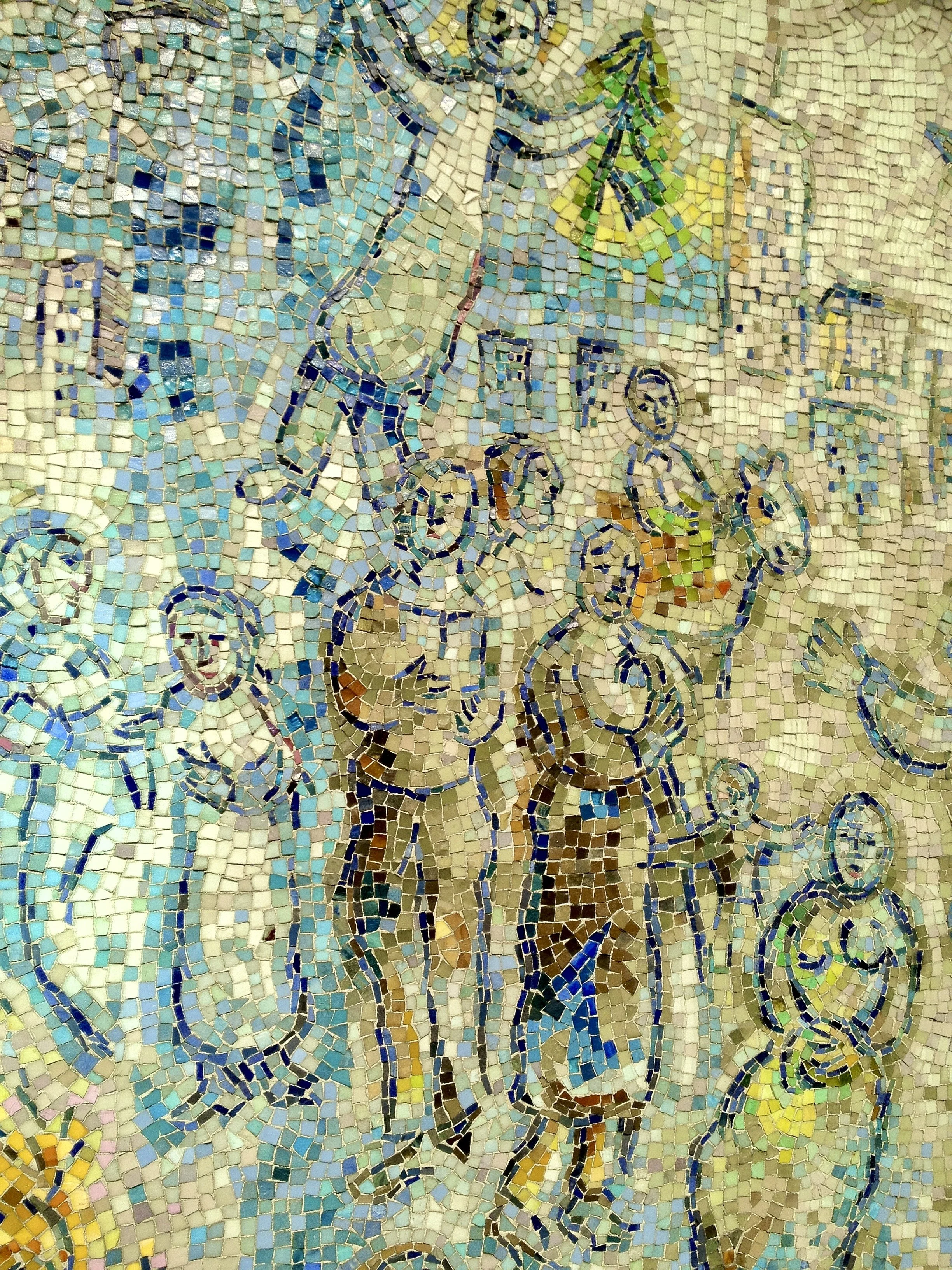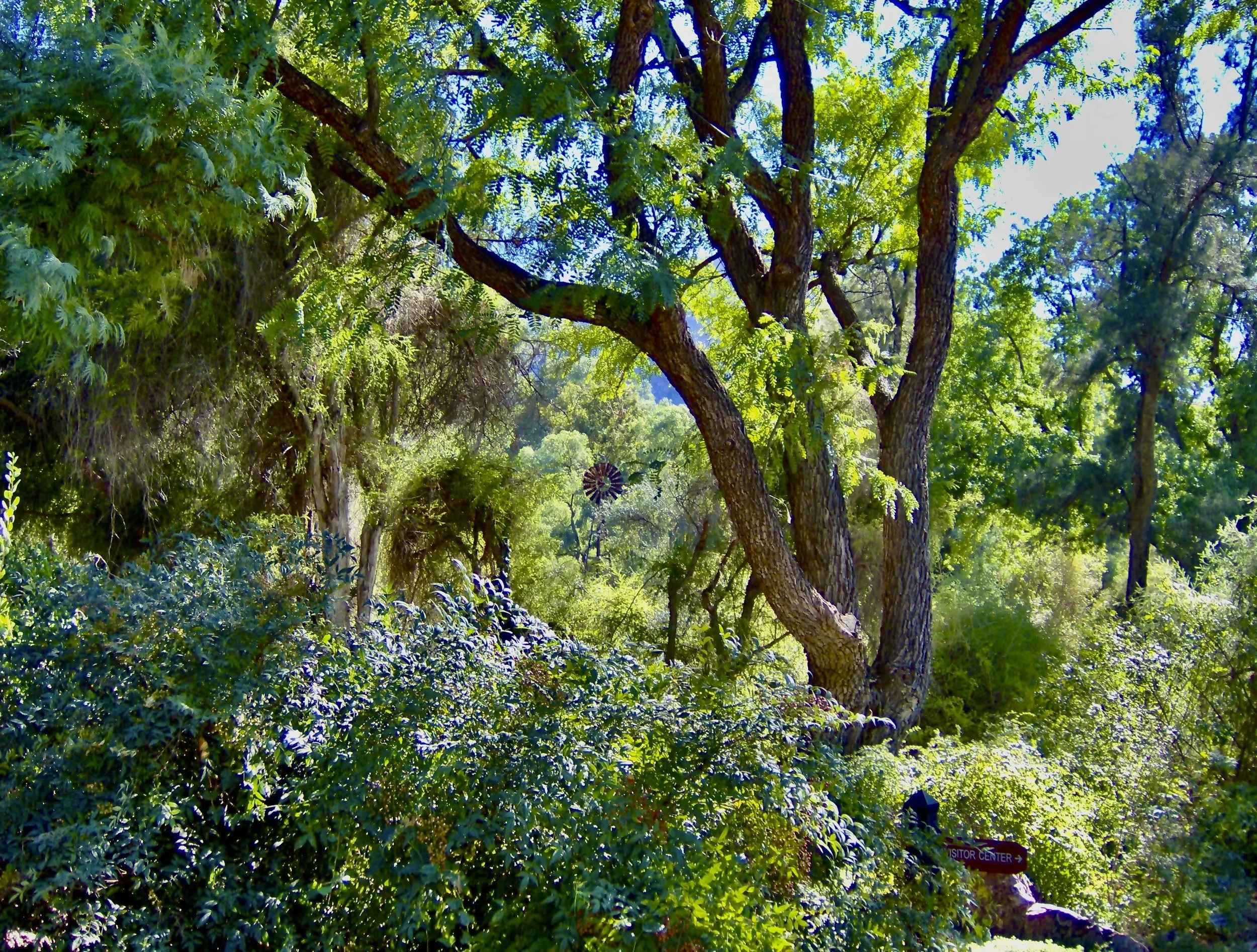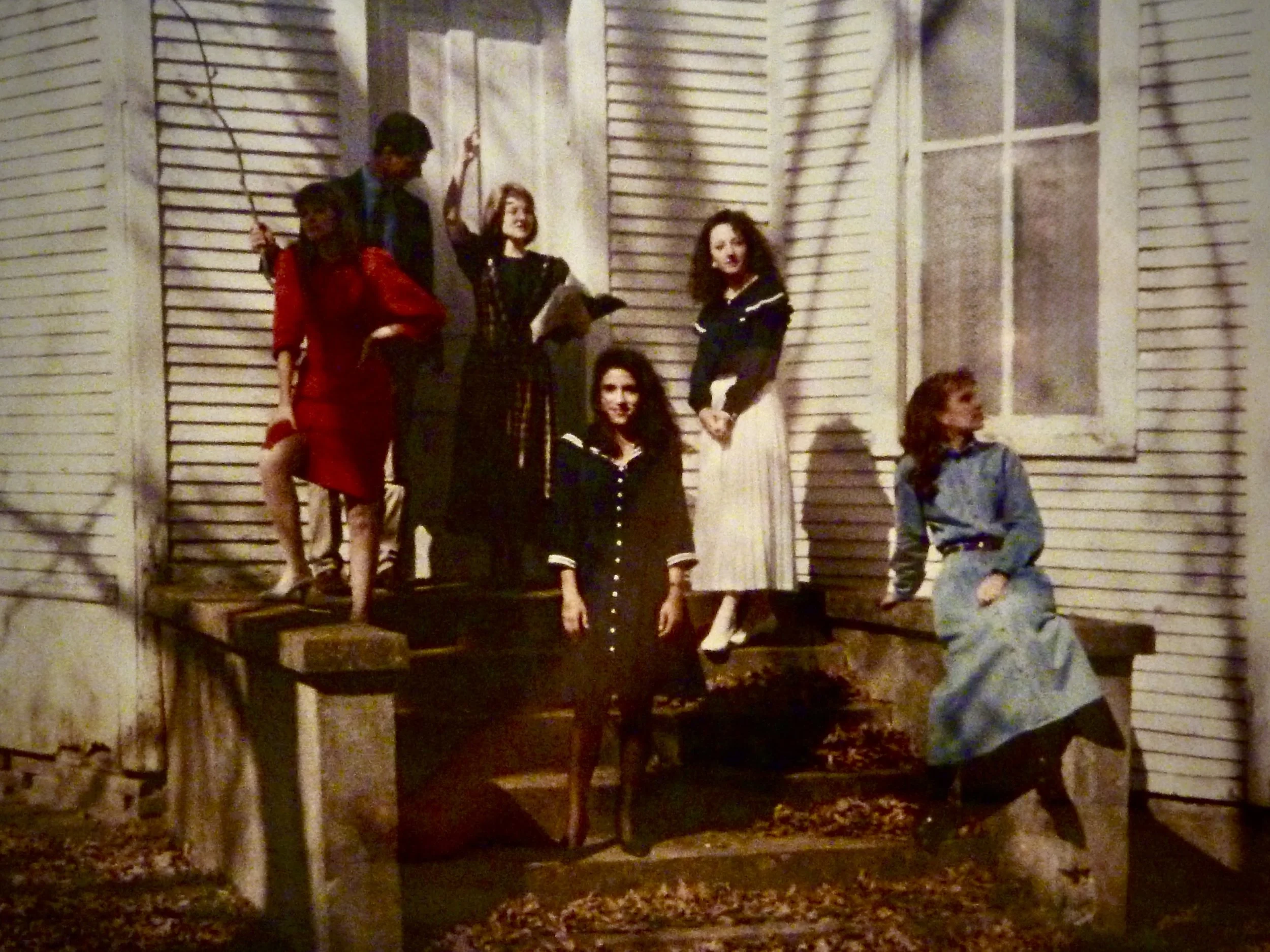Real Connection Is a Radical Act
How we can resist isolation and rebuild community, online and off
This is part of a series exploring Teilhard de Chardin’s vision of the Noosphere—his idea that human minds would become increasingly interconnected, creating a global intelligence greater than the sum of its parts. A century later, we’re living in something that looks a lot like it… but not exactly how he imagined. The Noosphere was meant to expand human knowledge and bring us closer. Instead, algorithms, corporate tech monopolies, and social media addiction have fractured us. But all is not lost. This is a look at how we reclaim real connection—and why that might just be the most radical act of all.
A Tiny Recording Booth, a Big Idea
Tucked inside a fading Phoenix mini-mall, wedged between a tax preparation service and an ice cream shop, was a nondescript office. To get there, you had to walk under a dark Spanish colonial archway that looked like it had given up on life sometime in the 1980s. The adobe-style walls, once a cheerful peach, were now grayish-peach, coated in the fine dust that settles over desert cities and dreams.
And yet—I loved it.
Not because of the ambiance (or lack thereof) but because of what happened inside.
For a while, that little office was home. It was where I volunteered as a reader for an organization called Reading for the Blind and Dyslexic (now Learning Ally). Every week, I sat in a small recording booth, reading textbooks and novels aloud, knowing that somewhere, a person with visual impairments would be able to access knowledge because of my voice.
It felt deeply personal—one person reading for another, a bridge between words on a page and the mind receiving them.
This, I thought, was what the Noosphere should feel like.
A vast, open landscape of knowledge, freely shared. A space where connection, not control, was the driving force.
But somewhere along the way, we lost the plot.
The Noosphere was never meant to be a billionaire-controlled content machine. It was supposed to be a space where human knowledge expanded, where ideas were exchanged freely, where people became more human together.
And yet, instead of a global mind pushing us toward higher consciousness, we got…
Well. This.
Doomscrolling. Clickbait. Algorithms trained to fuel rage rather than curiosity. A system that rewards the loudest voices, not the most thoughtful ones.
So, what happened?
And more importantly—how do we take it back?
The Noosphere Isn’t Neutral—It’s Controlled by Algorithms and Billionaires
For a long time, I believed the Internet was a great equalizer.
And in some ways, it still is.
My dad’s ice maker broke? He fixed it after watching a YouTube tutorial.
I wanted to build puppets? I found free patterns and fell into a rabbit hole of instructional videos.
Great philosophers, scientific breakthroughs, historical moments—all of it is available at our fingertips.
And not just through the algorithm-driven chaos of social media. Libraries offer streaming services, e-books, and audiobooks—for free. Plays performed in London’s West End—starring some of the best actors in the world—can be streamed straight to your living room. Some of the greatest ideas in history are still just a click away.
But I was naïve to think that access to information meant access only to truth.
Most of what we see online isn’t something we actively choose—it’s something chosen for us.
Not by thoughtful editors.
Not by community consensus.
But by algorithms, designed for one thing: to keep us engaged, outraged, and endlessly scrolling.
Consider:
📌 Social media doesn’t give us a neutral view of the world—it feeds us more of what we already believe, keeping us locked inside ideological echo chambers.
📌 News aggregators push the most clickable headlines—not the most accurate ones—because attention equals ad revenue.
📌 Major tech corporations—Meta, Google, X (formerly Twitter)—do not exist to inform us. They exist to monetize us.
The result?
We were promised an Internet that would bring us closer together.
Instead, it has made us lonelier.
At first, it’s subtle—more scrolling, fewer phone calls; more “likes,” fewer real conversations.
But now, we have studies confirming what many of us already feel: loneliness is a public health crisis, as deadly as smoking a pack of cigarettes a day.
And yet—we keep logging in.
Because social media is not a neutral tool. It is a system designed to keep us coming back.
And unless we actively resist, we are no longer users of the Noosphere.
We are products.
What Would a People-Centered Noosphere Look Like?
Teilhard imagined the Noosphere as a living network of human knowledge, a space where people shared ideas, built on each other’s discoveries, and deepened their understanding of the world.
It wasn’t just about getting information faster—it was about becoming better thinkers, more connected humans.
And yet—here we are.
So, how do we fix it?
If I could redesign the Internet, it would feel less like a corporate shopping mall and more like a giant, open-source library.
📌 A place where knowledge is freely shared.
📌 Where curiosity is rewarded.
📌 Where information is held to a standard—without being locked behind paywalls or twisted into clickbait.
But even this idea has complications.
Who decides what is “truth”? Who holds the keys? The risk of gatekeeping is real.
Yet right now, we’re living in the opposite extreme:
❌ Where truth and lies are treated as equals.
❌ Where clickbait wins over credibility.
❌ Where algorithms, not humans, decide what deserves our attention.
And yet—there are still places where the Noosphere feels like it belongs to the people.
✅ Wikipedia, despite its imperfections, remains one of the largest community-driven knowledge hubs.
✅ Open-source software communities continue to build tools that aren’t owned by corporations.
✅ Nonprofits like USAFacts.org and the Internet Archive work tirelessly to preserve information and push back against misinformation.
These spaces aren’t perfect. But they remind us that the Noosphere doesn’t have to be dictated by billionaires and bots.
It’s still ours—if we choose to shape it.
Rebuilding Connection on a Human Scale
The Noosphere was never meant to be a content factory designed to keep us clicking.
It was meant to be a space for real knowledge to grow, for ideas to be exchanged, for people to become more humant ogether.
And here’s the truth: that kind of intellectual and emotional expansion?
It doesn’t happen inside an algorithm.
It happens when you read a book that challenges your worldview.
It happens when you attend a talk by someone who knows more than you do.
It happens when you stand in front of an artist’s work and let it rewire your brain.
One of the best ways to fight back against the algorithmic flattening of thought is to step entirely outside of it. Go to a lecture. Join a book club. Watch a play. See an exhibit that forces you to think in a way you never have before. The Noosphere doesn’t just exist online—it exists in every real-world moment where knowledge is exchanged, challenged, and expanded.
The Noosphere Is Still Ours—If We Choose to Take It Back
The Internet isn’t going anywhere. Algorithms aren’t going anywhere.
But neither are we.
And every intentional act of connection—whether online or in person—pulls the Noosphere closer to what it was meant to be.
We get to decide what kind of future it becomes.
So, let’s make it ours.




